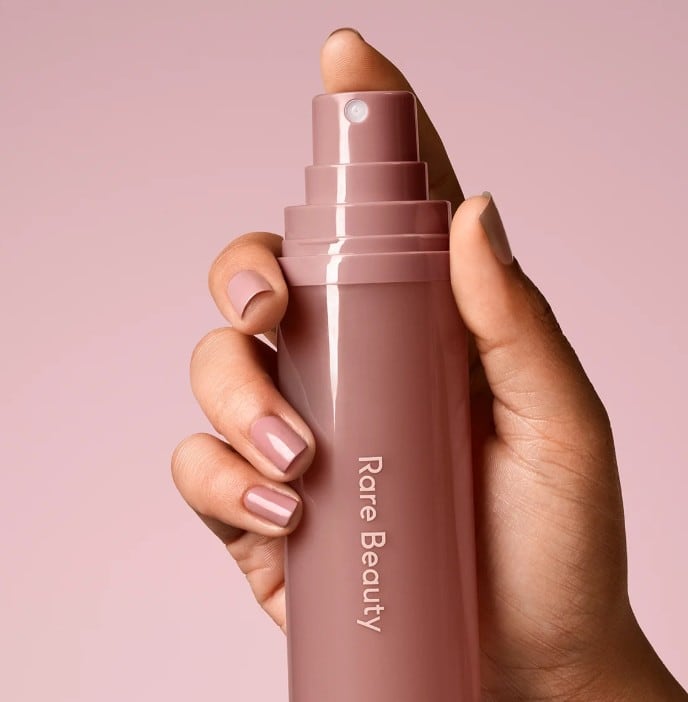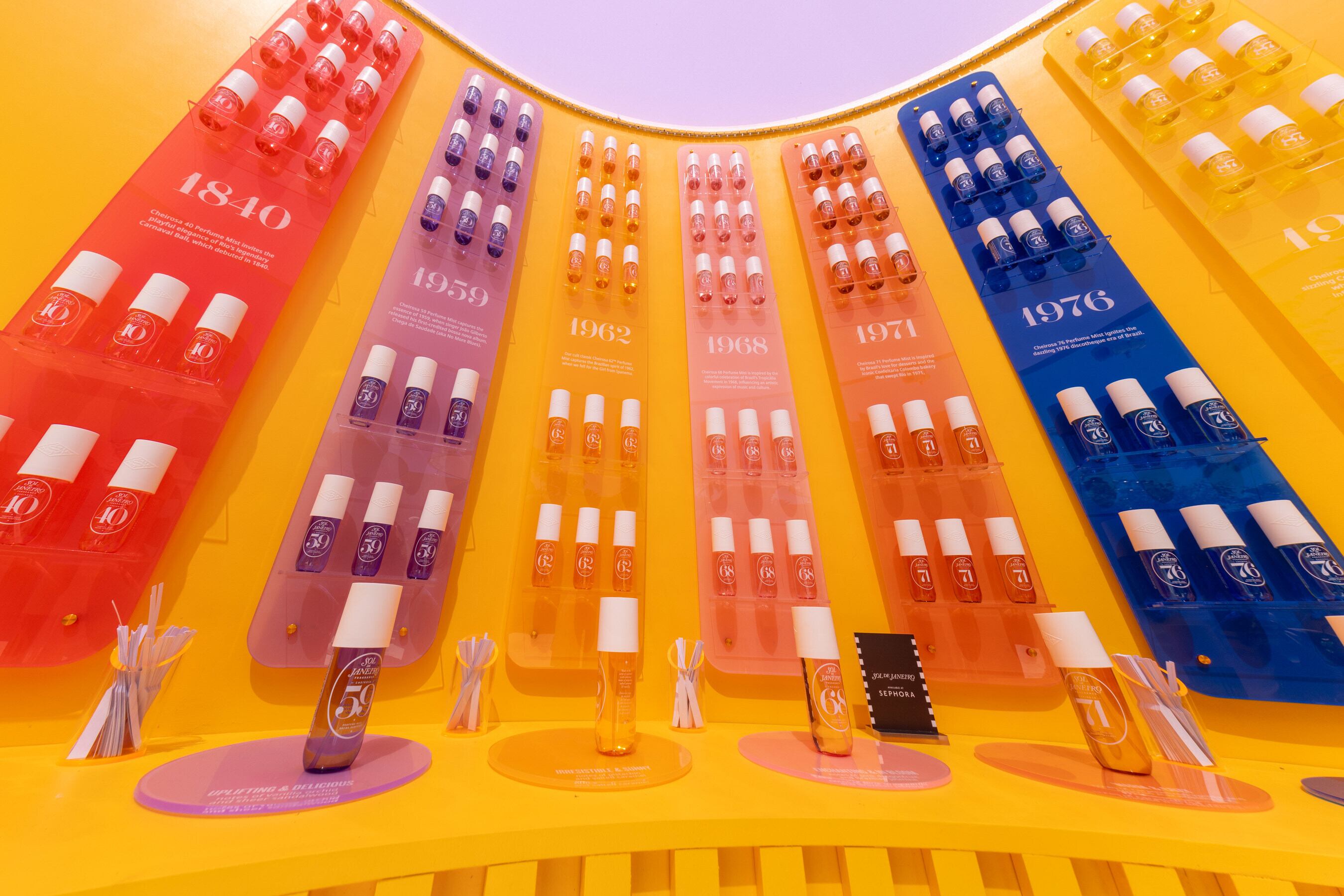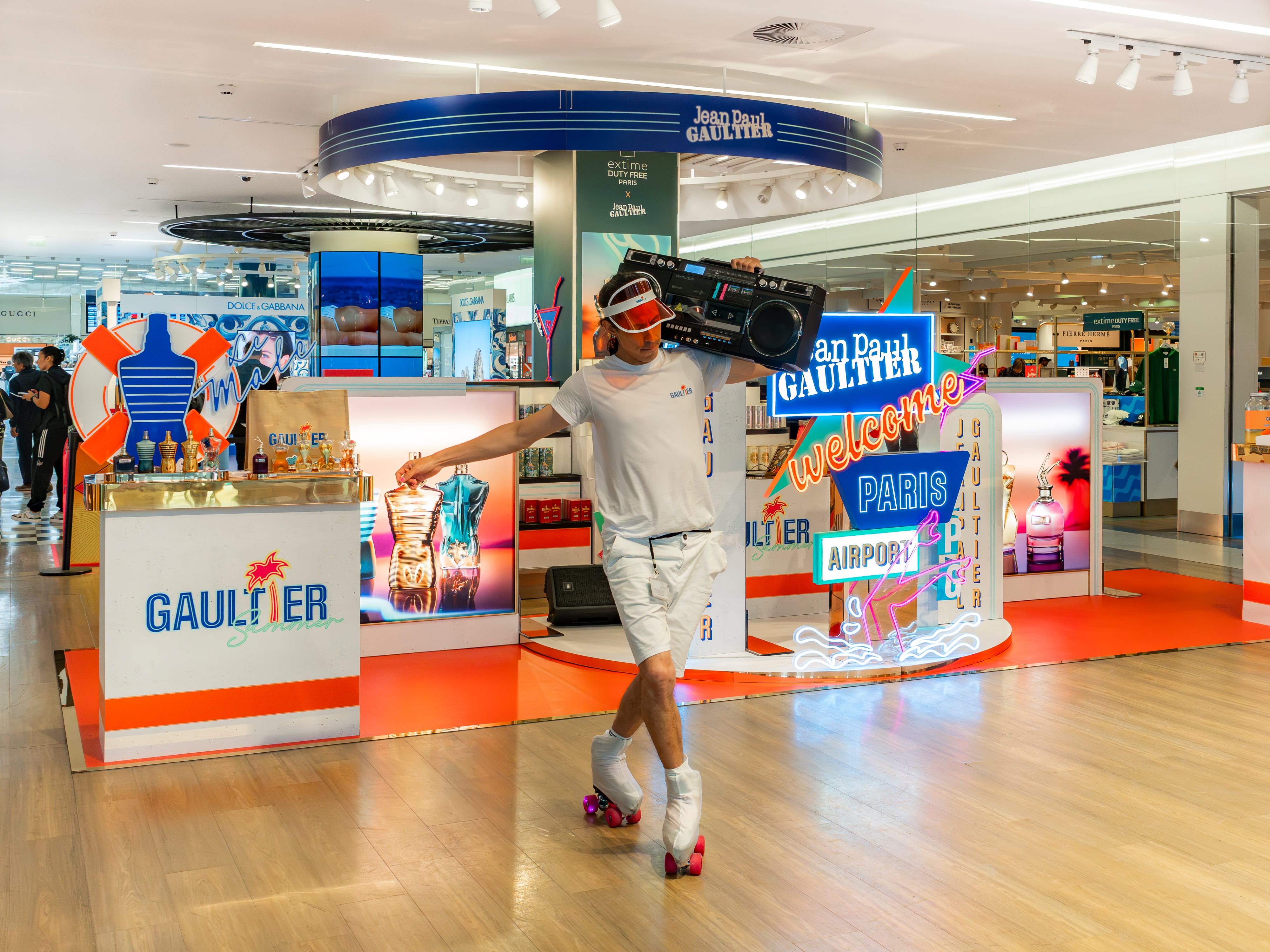Key takeaways
- Fragrance mists are now the most widely used format in the UK, driven by affordability and versatility.
- Travel retail is a key growth channel, especially among Gen Z and millennials.
- Brands are innovating with multifunctional mists that offer skincare benefits like hydration and SPF.
- Gourmand scents dominate, but there’s growing interest in subtle profiles for older consumers.
- Prestige brands are using mists as entry-level products to attract new customers.
At its recent half-year financial results meeting, Coty’s CEO Su Nabi announced that the multinational is “launching a plan of attack with fragrance mists.”
It appears to be a wise move, considering Coty has a plethora of fragrance brands in its stable and beauty shoppers have developed a passion for scent mists.
At one time, the target customers for body mists were teenagers looking to spend their pocket money, but now they seem to resonate across all demographics. So, why did fragrance mists become the next big thing and what’s driving this trend?
Why fragrance mists are gaining mainstream appeal
According to senior consultant at Mintel Consulting, Vivienne Rudd, body mists and sprays have enjoyed increased popularity – especially in markets like the UK, where in 2024, almost 40% of Brits were users of body sprays and mists, making them the most widely used fragrance format.
“This is largely due to their lower price point compared to perfumes, making them attractive to consumers looking to save money during economic uncertainty,” said Rudd.
“Brands like Impulse (2024) and Salt & Stone Bergamot & Hinoki Body Fragrance Mist (2024) have successfully targeted both budget and prestige segments, with mists ranging from £3 to £45,” she explained.

“Consumers often use body mists for everyday wear and reserve perfumes for special occasions,” Rudd said. “Brands are encouraging layering with other products, like deodorants and lotions, to enhance longevity and create personalised scent experiences.”
Rudd also highlighted that mists are being positioned as lighter, more subtle alternatives to traditional perfumes, which appeals to consumers who prefer less intense scents.
In terms of popular olfactory profiles for mists, she said that the gourmand scent has become the go-to – sparked by Sol de Janeiro.
How travel retail and layering trends are driving growth
According to director of marketing, global travel retail, at Sol de Janeiro’s parent company L’Occitane Group, Mona L’Hostis, consumers love layering scent mists or refreshing their scent on the go, which is why they are popular with travellers and have made impressive sales in the travel-retail sector.
“In travel retail, mists hit the sweet spot between indulgence and convenience, making them a standout choice for airport shoppers seeking aspirational yet approachable luxury,” she explained.
“Sol de Janeiro fragrance mists have seen strong uptake in travel retail globally,” she said.
“Perfume mists are helping drive growth in the channel and capturing impulse purchases among travellers of all profiles, but particularly millennials and Gen Zers, looking for a joyful, sun-kissed fragrance experience.”
L’Hostis said that while the brand has broad appeal, fragrance mists in travel retail resonate strongly with younger consumers – Gen Z and millennials – who are exploring new scents and brands while travelling.

However, Rudd believes there is also an opportunity for brands to innovate with less sweet, more subtle scent profiles to attract older demographics.
She also highlighted the growing number of prestige and luxury brands launching body mists as an entry point for consumers who may not be able to afford their higher-priced perfumes, or who want a low-investment option that can be cycled with other body mists for a low-priced fragrance wardrobe. She named examples such as Salt & Stone and Chanel, which have introduced premium-priced mists with added skincare benefits.
Skinification and sunification: what’s next for body mists?
It appears there is now a growing trend for mists that offer additional benefits, such as moisturisation, hydration and even antibacterial properties.
“Ingredients like glycerin and red algae are being used to blur the lines between fragrance and skincare, appealing to consumers seeking multifunctional products,” said Rudd.
“This drive towards skinification is also propelling the development of fragrances said to be suitable for sensitive skin.”
She added that in the US, 74% of people who use fragrance or fragranced personal care products say they’re interested in fragrances that are safe for sensitive skin. This is still an extremely niche area, but one that lightweight body sprays are perfectly positioned to own in the future.
Another emerging trend she has spotted in the fragrance category is ‘sunification’, and she highlighted launches such as Skylar’s SPF/fragrance hybrid called Boardwalk Delight Scent-Screen Mist. The mist provides SPF30 and contains red algae and copper peptides to support hydration, smoothness and anti-ageing benefits. It is also said to be water resistant for up to 80 minutes.
Rudd said that younger consumers, aged between 16–34, are driving the most interest in multi-use fragrances.
Examples of new launches in this space have included Phlur’s Amber Haze Hair & Body Fragrance Mist, which can be used on both hair and body, and Rare Beauty’s Find Comfort Body & Hair Fragrance Mist, which is infused with biotin, niacinamide and peach flower extract to revitalise body skin and hair.

“This is also helping haircare brands to build bridges into a new category,” said Rudd. “The latest onboard is Amika, which has created a hair and body fragrance called Aura, which carries the brand’s signature scent and can be layered with its Perk Up dry shampoo and hand wash for a complete Amika fragrance wardrobe.”





